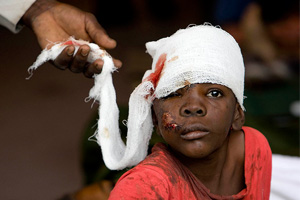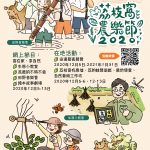Mobile phones help to target disaster aid, says study
Mobile phones of people fleeing natural disasters can be used to target emergency aid according to a new study.
The report reveals how scientists mapped population movements following the Haiti earthquake based on location data from two million handsets.
That information allowed aid organisations to channel relief supplies to those areas most in need.
Researchers are now setting up a non-profit organisation to provide location analysis for future disasters.
Tracking device
In immediate aftermath of the 2010 Haitian earthquake, many people fled the capital, Port au Prince.
Researchers from Sweden’s Karolinska Institute and Columbia University in the US asked the country’s biggest cellular network, Digicel, to provide anonymised information about the phone towers that people were using.
From that data they estimated that 600,000 Haitians had left the capital in the first 19 days, and were able to locate concentrations of displaced people on a map.
Scientists forwarded this analysis to aid coordinators working in the field, so that numbers of evacuees could be verified and supplies targeted to specific locations.
When a cholera outbreak struck Haiti later that year, the researchers were quick to respond.
“We rapidly received mobile phone data, and within 12 hours we were able to send out analyses describing which areas had received people from the cholera outbreak zone to provide information on areas at increased risk of new outbreaks,” said Dr Linus Bengtsson of the Karolinska Institute.
Dr Bengtsson said that his model could be used almost anywhere in the world as 86% of the global population now has cellular network coverage.
However, in military confrontations – such as the uprising in Libya – it may be more difficult to implement.
“In a conflict you must take into account the objectives of the factions involved. The phone operators might be reluctant to share information if there is a risk for them,” explained Dr Bengtsson.
“In natural disasters, the goal of all players is to help those affected.”
Other technologies
This study is one of many technological solutions to be tested during the disasters that struck Haiti.
After the earthquake, Haitians used the web and social networks to communicate with each other, telling their families where they were.
The Ushahidi project – an open, crowd sourcing initiative – used this information to construct an online map which showed the infrastructure damage, areas lacking of food and water, and reports of missing people.
“We pass it on to organisations on the ground which can then work with the specific needs reported by the people,” Erik Hersman, co-founder of Ushahidi, told BBC news.
Dr Bengtsson welcomed cooperation between the various crowd sourcing projects in the hope that it might lead to better disaster response in future.
“We are interested in collaborating widely with other good initiatives,” he said.
Source: BBC News
Image: United Nations Development Programme










